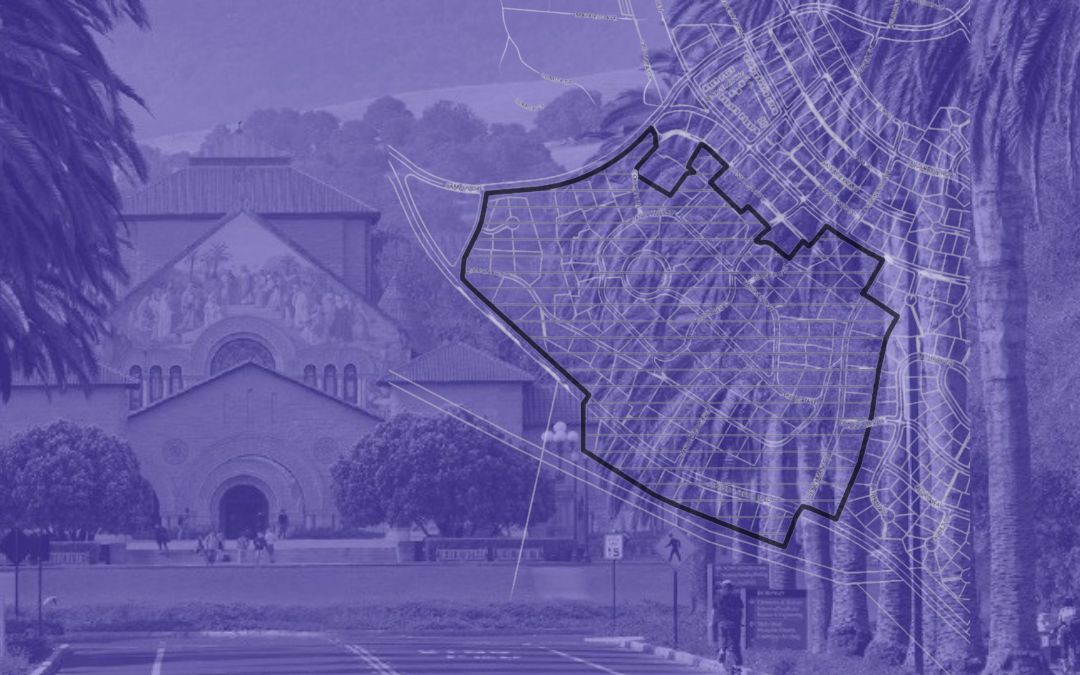On Thursday, September 15, 2022, CaRLA joined with co-petitioner Kenneth Shotts, a political scientist at Stanford, to sue Santa Clara County for their illegal downzoning of the newly created Upper San Juan Residential District (SJRD), an area right outside of Stanford in the unincorporated area of Santa Clara County. The Board caved to NIMBY outrage and increased development standards to pre-emptively preclude any “small-lot” developments such as the ones under construction in the Cabrillo-Dolores Faculty Housing development that started the whole controversy in 2019. In this case, the “small” lots refer to 2,200 – 2,900 sq ft homes on 6,150 – 11,000 sq ft lots. CaRLA sees through the County’s ruse to side step SB 330 (the Housing Crisis Act of 2019) to appease wealthy homeowners who don’t want any new housing, and CaRLA has filed suit.
The ordinance is designed to ensure that this neighborhood remains single-family homes on very large lots – the type of housing that is the least affordable and accessible. The Cabrillo-Dolores project, which builds a whopping seven houses on a two-acre site, was fiercely fought by a subset of neighboring Stanford faculty. Its approval led to the Board of Supervisors directing planning staff to find a way to downzone the district without upzoning another area to compensate, ignoring the requirements of SB 330, also known as the Housing Crisis Act of 2019 (HCA).
During the approval of the project, District 5 Supervisor Joe Simitian directed the Planning Department to “apply a mechanism allowing for more rigorous development standards”, and even requesting modifications to surely “reduce density” in Upper San Juan. As a result, a new zoning overlay to preserve existing large lots and low density of the neighborhoods (Ordinance No. NS-1200.381), and a second ordinance to apply the new zoning overlay (Ordinance No. NS-1200.382) were presented to and passed by the Board in May 2022.
The Board of Supervisors’ new zoning designation for the neighborhood requires 30-ft front yard setbacks (from 25 ft previously), 100-ft lot width frontages (from zero), and a new 20% max building lot coverage for single-family dwellings and 35% for duplexes (from zero). This new zoning locks in what is already developed and, in many cases, makes the existing buildings illegal to build today. This is essentially downzoning and it flies in the face of the Housing Crisis Act of 2019 (HCA), which was originally passed as SB 330 in 2019 and extended as SB 8 in 2021. The HCA makes it illegal for jurisdictions to enact residential zoning, planning, or development standards more restrictive than those in effect on January 1, 2018, regardless of whether the standards explicitly reduce permissible density in the area.
While certain neighbors, who are required to have ties to the university to live in the area, have been vociferously opposed to new development, Stanford alum and professor Ken Shotts has been a supporter of more housing. He has joined the CaRLA suit saying, “Even professors struggle with housing affordability, and the problem is much worse for most working people. Stanford ought to build more housing and the County should encourage construction of housing whenever possible. Instead, the County is requiring ultra-low-density housing, thereby contributing to the housing crisis. Anyone who can’t afford housing in Silicon Valley should be outraged by local government regulations that mandate enormous lot sizes, whether in Atherton, Los Altos Hills, near Stanford, or any other town. It’s particularly egregious that this action was taken by the County Board of Supervisors, which is supposed to represent the interests of all county residents, not just a small group of current property owners.”
The ordinance enacted by the Board of Supervisors in this case is exactly the type of action the Housing Crisis Act was intended to prevent. Local governments catering to NIMBYs enact layers and layers of barriers to housing with the effect of. In this case, that means locking in fewer than two homes per acre of land. Maintaining such a status quo is maintaining policies of exclusion and out-of-control housing costs.
CaRLA is bringing this lawsuit to send the message that this status quo is both untenable and illegal. Cities and counties can no longer ignore the law because they don’t think anyone will challenge them.
CaRLA and Professor Shotts are happy to be be represented by Lisa Ells and Alex Gourse of Rosen Bien Galvan & Grunfeld LLP in this case
Visit our case page to get some more background and to read our petition for declaratory relief.
Read our press release below:

